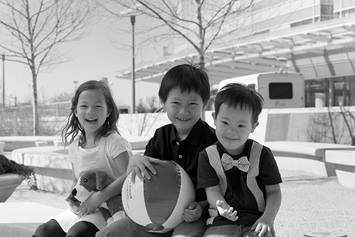Tenia Pedis
Tinea Pedis is also called athlete's foot. It is a common infection caused by a fungus.
What Is Tinea Pedis?
Athlete’s foot is a common infection caused by a fungus. It can spread to your toenails and to other people. This means it’s contagious.
- The fungus:
- Spreads by sharing socks or shoes or walking barefoot on the same floor as someone with athlete’s foot.
- Grows best in dark, warm, moist places.
- People are at greater risk of getting athlete’s foot if they:
- Have sweaty feet.
- Wear tight shoes or socks that don’t get good airflow.
- Don’t completely dry their feet after being wet.
- The athlete’s foot rash appears between the toes or on the arch of the foot. The skin can be:
- Red with clear bumps and small blisters, or it will peel, crack, or flake.
- Very itchy and sometimes burn.
How Is Tinea Pedis Diagnosed?
Your child's doctor or health care provider:- Will examine their feet.
- Ask about what sports they do.
- May scrape some skin for testing.
How Is Tinea Pedis Treated?
Simple causes of athlete's foot are treated with topical (on the skin) creams. For more severe cases, your child will get a prescription for an oral (taken by mouth) medicine.
How Can Tinea Pedis Be Prevented?
To help prevent athlete’s foot, your child should:
- Avoid sharing shoes, socks, washcloths, and towels.
- Wear socks that wick away moisture.
- Change their socks if they get damp or sweaty.
- Avoid tight footwear.
- Wear shoes with breathable fabric. Avoid vinyl and rubber shoes.
- Completely dry their feet and between their toes after sweating, swimming, or bathing. They need to use their own clean towel.
- Wear flip-flops or waterproof shoes in locker rooms, showers, and at swimming pools.
- Wash their feet each day and their hands after touching the rash.
- Dust an antifungal powder on their feet and in their shoes.
Helping Hands™ Patient Education Materials
Helping Hands™ are easy-to-read guides about different illnesses, therapies, surgeries, and more. They’re created by the Patient Education team at Nationwide Children’s Hospital and are reviewed and approved by clinical staff, like nurses, doctors, pharmacists, and psychologists. Nationwide Children's Hospital is not responsible for misuse of information in patient education materials, including Helping Hands™.
HH-I-383 | ©2015, revised 2024, Nationwide Children’s Hospital



